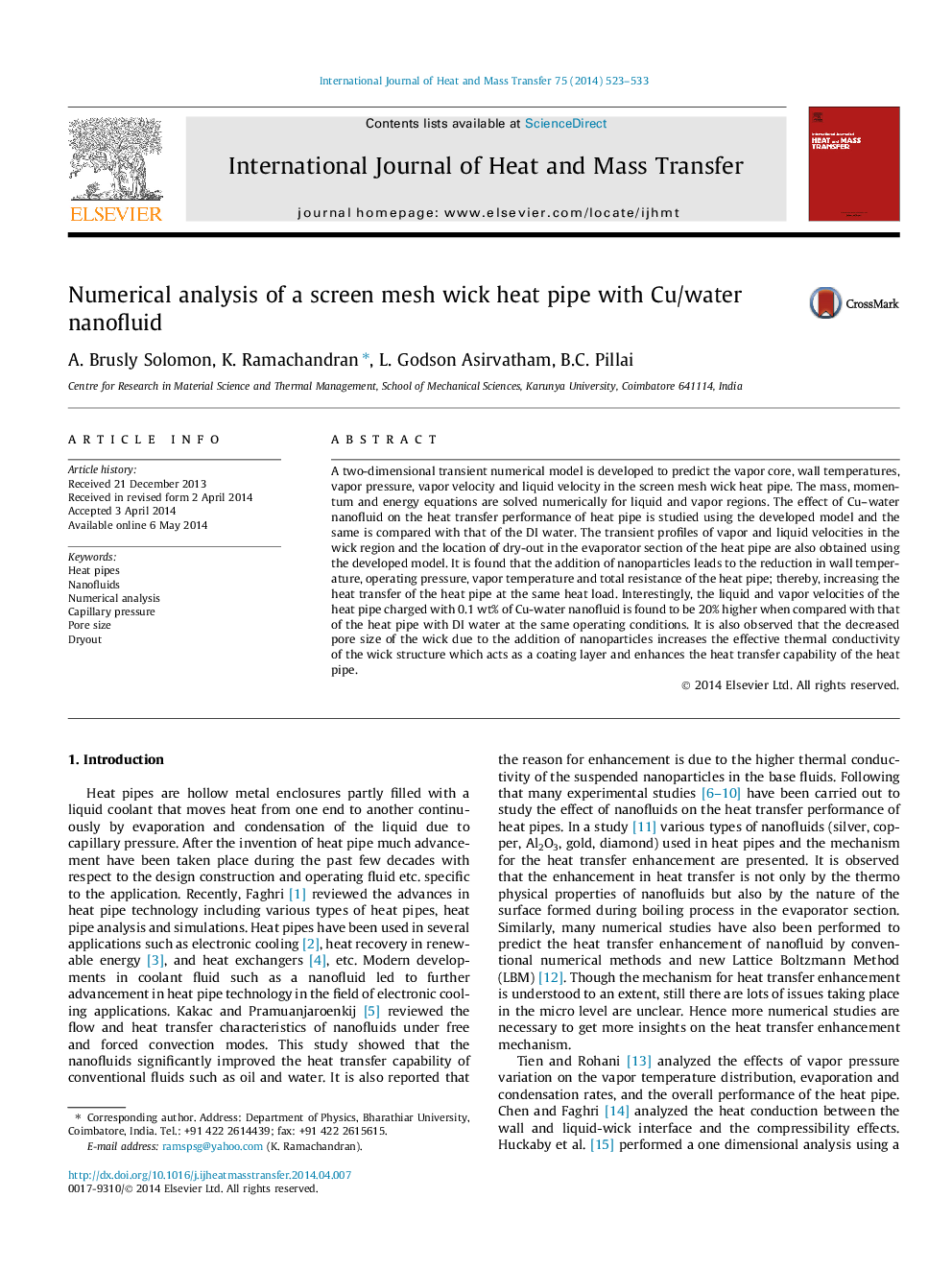| Article ID | Journal | Published Year | Pages | File Type |
|---|---|---|---|---|
| 7057069 | International Journal of Heat and Mass Transfer | 2014 | 11 Pages |
Abstract
A two-dimensional transient numerical model is developed to predict the vapor core, wall temperatures, vapor pressure, vapor velocity and liquid velocity in the screen mesh wick heat pipe. The mass, momentum and energy equations are solved numerically for liquid and vapor regions. The effect of Cu-water nanofluid on the heat transfer performance of heat pipe is studied using the developed model and the same is compared with that of the DI water. The transient profiles of vapor and liquid velocities in the wick region and the location of dry-out in the evaporator section of the heat pipe are also obtained using the developed model. It is found that the addition of nanoparticles leads to the reduction in wall temperature, operating pressure, vapor temperature and total resistance of the heat pipe; thereby, increasing the heat transfer of the heat pipe at the same heat load. Interestingly, the liquid and vapor velocities of the heat pipe charged with 0.1Â wt% of Cu-water nanofluid is found to be 20% higher when compared with that of the heat pipe with DI water at the same operating conditions. It is also observed that the decreased pore size of the wick due to the addition of nanoparticles increases the effective thermal conductivity of the wick structure which acts as a coating layer and enhances the heat transfer capability of the heat pipe.
Related Topics
Physical Sciences and Engineering
Chemical Engineering
Fluid Flow and Transfer Processes
Authors
A. Brusly Solomon, K. Ramachandran, L. Godson Asirvatham, B.C. Pillai,
